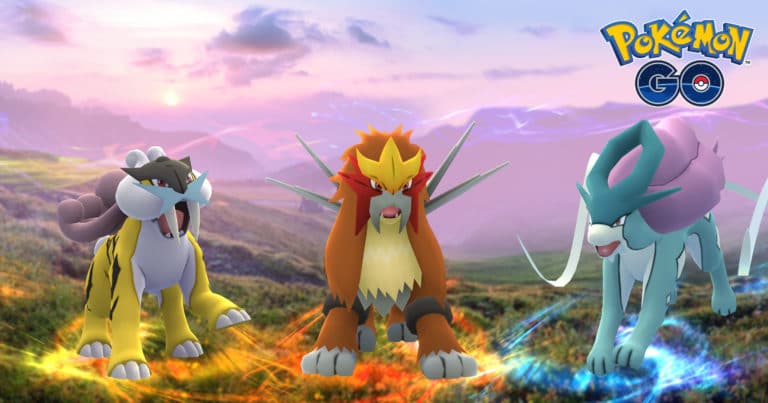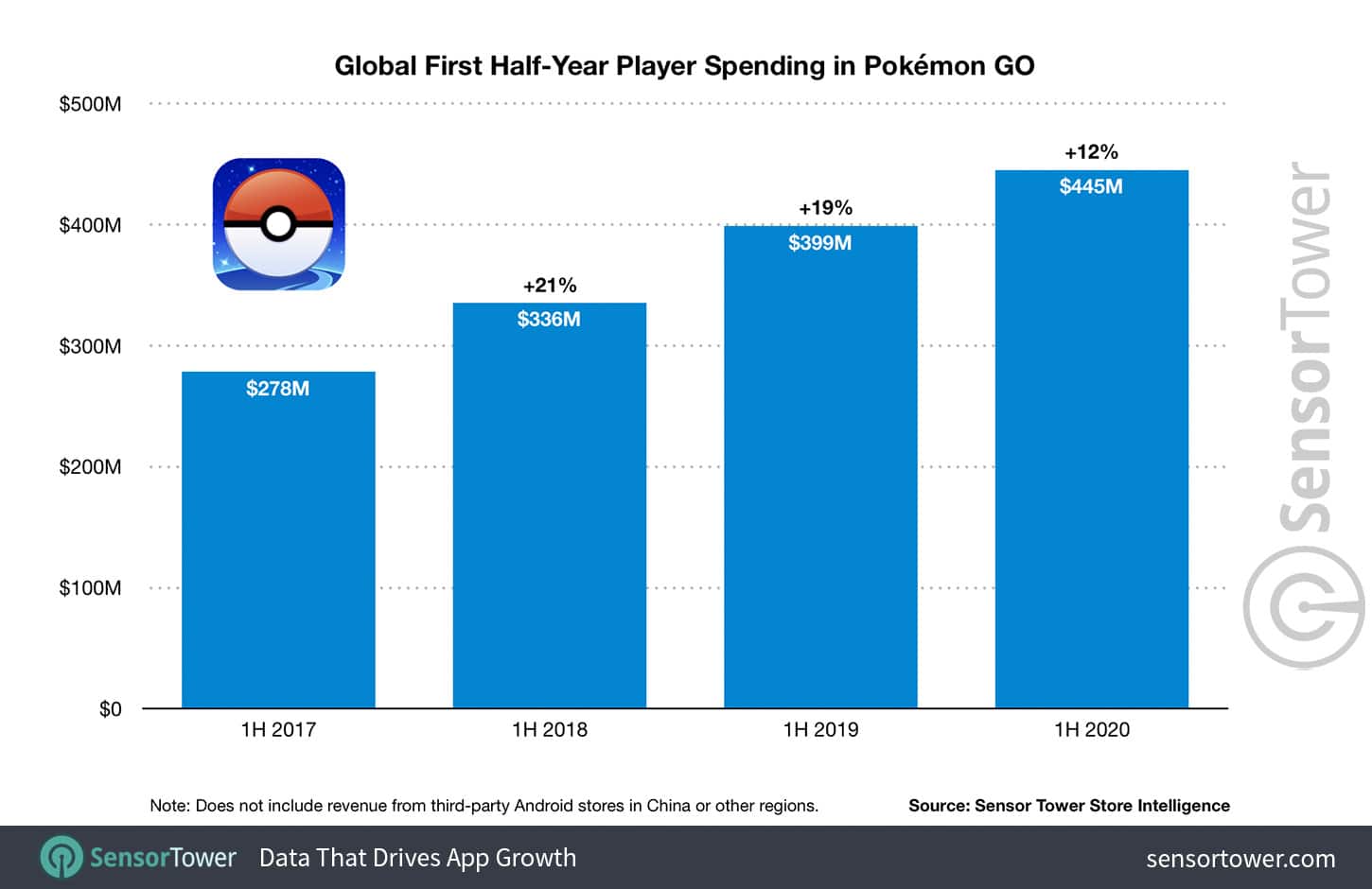
Data Dive is AR Insider’s weekly dive into the latest spatial computing figures. Running Mondays, it includes data points, narrative insights and takeaways. For an indexed library of data, reports, and multimedia, subscribe to ARtillery Pro.
Pokémon Go continues to defy odds. Mobile games are often challenged to grow, while sustaining player engagement through novelty, new challenges and game mechanics. Niantic has proved astute in these endeavors, while maintaining steady and increasingly-diversified revenue.
The latest validation comes from Sensor Tower’s estimate* that the game has reached $3.6 billion in lifetime revenue… just in time for its 4th birthday. It’s hard to believe it was four years ago, Summer 2016, when hordes of players started roaming public parks to confused onlookers.
Equally important to cumulative revenue is the fact that it’s trending up. Niantic has managed to not only sustain revenue from its initial launch boom, but achieve steady growth. This is most evident in the fact that 2019 was its biggest year to date ($905 million) according to Sensor Tower.
Lifetime Lead
Drilling down on Sensor Tower’s figures, Pokémon Go’s lifetime revenue lead is followed by Square Enix’s Dragon Quest Walk ($540), Ludia’s Jurrasic World Alive ($76.5 million), and Tencent’s Let’s Hunt Monsters ($70 million). In fairness, these have varying time-in-market.
The U.S. is its most lucrative market ($1.3 billion), followed by Japan and Germany. Platform-wise, Android leads ($1.9 billion) over iOS ($1.7 billion). In units/users, the game has achieved 577 unique downloads to date, led again by Android (450 million) and iOS (125 million).
This means that Android has a commanding lead of users (78 percent), but only a slight lead in total revenue (54 percent). This gives iOS greater revenue per user (ARPU), possibly due to socioeconomic factors and currency variables that map to regional device/platform use.
Looking forward to 2020, it’s already reached $445.3 which means it’s on pace to exceed full-year 2019 revenue. This comes despite global lockdowns that inherently impact a game so dependent on out-of-home play. Niantic has been creative in pivoting game mechanics to Covid-era realities.

Nature/Nurture
One reason this is all notable is that the common arc for mobile games is to lose novelty, as noted. There are few games that have been able to counteract this natural occurrence with a nature/nurture combination of inherently replayable game mechanics and deliberate updates.
Pokémon Go has demonstrated this formula with proven ingenuity, good design principles and thoughtful in-game updates. Those include the aforementioned Covid-era updates, as well as last year’s Team Rocket and Buddy Adventures updates. These follow AR+ Mode and Snapshot.
Beyond play dynamics, this validates Pokémon Go’s in-app purchases (IAP) revenue model. It’s inherited from the broader mobile gaming world, where it approaches $70 billion in annual revenue on the behavioral economics of microtransactions, a la Fortnite.
Not only is IAP validated in mobile gaming but it’s fitting to AR’s early stage when users hesitate to pay upfront for premium apps. Beyond revenues, IAP is supported by consumer survey data from our research arm ARtillery Intelligence, and recent report on top AR business models.
Platform Play
The question remains how the above pace will sustain. Growth rates naturally diminish as revenue escalates and period-over-period growth is calculated from a larger denominator. This compels revenue diversification or adjacent products that boost variable revenue against fixed cost.
This is precisely what Niantic recently did by expanding the capacity of its secondary revenue stream for in-game brand sponsorship. Previously available to multi-location brands like McDonald’s and Starbucks, it will now tap into the long-tail SMB marketplace.
But the larger play is the Real World Platform. This could represent the future of Niantic’s business. Rather than just a game studio, it can use its valuable learnings from Pokémon Go to be the go-to platform to power several other location-based AR titles. Next up: Catan.
All of this is important to watch, as early industry leaders like Niantic do the industry a favor through large-scale deployment. That can uncover market dynamics and demand signals that are valuable intelligence in early stages of any consumer technology. We’ll keep tracking it closely.
*Sensor Tower’s Store Intelligence figures are extrapolated third party data based on consumer behavior in its network, rather than first-party data from Niantic. The data are still reliable as Sensor Tower’s network reach, and consistent methodology over time enable longitudinal analysis.
Header Image Credit: Niantic


